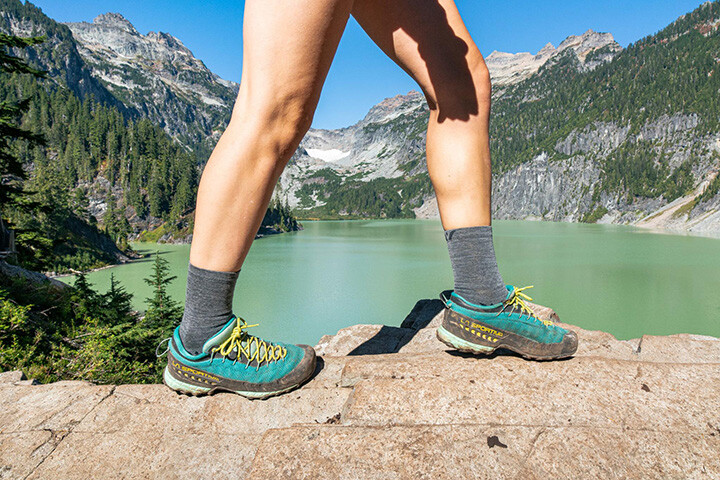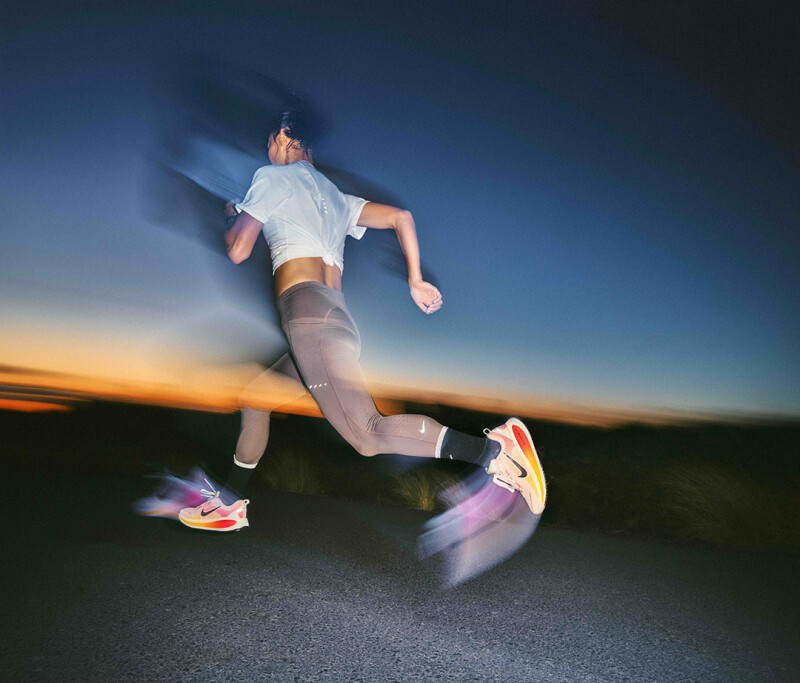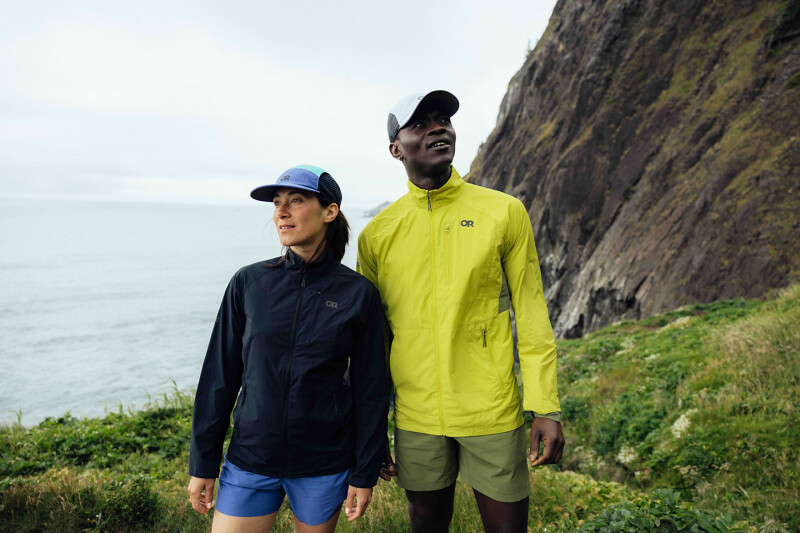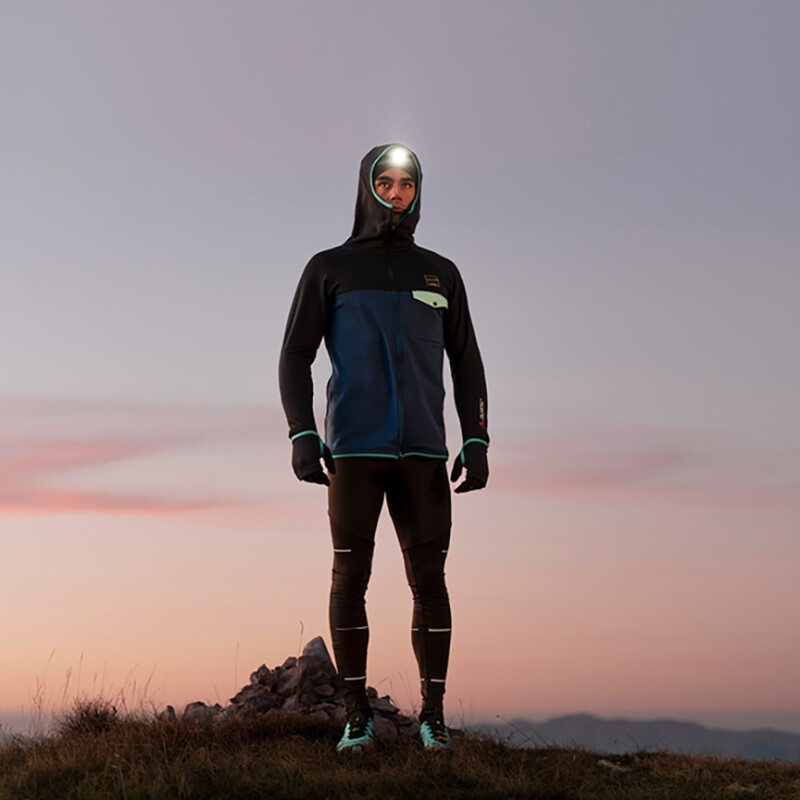Everyone in run specialty retail knows that running shoes always take precedence when selecting the right gear for a long stride, but there’s one not-so-secret ingredient that can take that run to the next level — and the retail sale to a higher level as well.
Yes, the often overlooked but always important running sock is making its case as being just as important to a runner as the shoe and other essentials. Choosing just the right sock can make all the difference between a good run and a bad one. These socks not only look good, but they prevent blisters, control moisture and cushion the feet.
Today’s high-tech socks are certainly worth the investment for runners; however, this season socks might mean high price tags for anyone shopping for new gear.
“Customers are still purchasing socks, but the retail cost is soaring. We have had several customers express sticker shock in our shop,” says Dustin Pearce, owner of Run Hub Northwest, Eugene, OR. “Nearly $20 for one pair of socks is more than many can justify when they can buy a six-pack at a box store for that price, even if the quality is inferior.”
This is challenging for any run specialty retailer hoping to sell more advanced socks at these higher price tags to existing runners who know and understand the benefits are worth the cost. What becomes even more challenging, however, is selling them to new runners, most of whom do not understand the importance yet of spending a few extra bucks to get the right socks on their feet.
“I find that most new runners are not thinking about socks,” says Jimmy Wiggins, managing partner of Varsity Sports, New Orleans, LA. “That is why emphasizing the importance of the socks as well as letting the customers use try-on socks while going through the shoe fitting process is very important to including socks in the sale.
“Running socks are getting harder to sell as add-ons with the rising prices getting closer to $20 per pair,” he adds. “The newer runners may buy the cheaper multi-pack socks and then upgrade later to the higher price single-pack socks.”
Start Simple, Then Expand
Starting simple when it comes to sock selection seems to be the trend for new runners, but once they see the difference today’s high-tech socks can make, they become more likely to upgrade to the next level.
“Yes, some get the tech in socks and jump on board,” says Alexis Kinney, accessory buyer for Up and Running, Dayton, OH, pointing out that most will buy the multipack first so they can acquaint themselves with technology. “Then they upgrade to the fancier socks as they progress in the sport,” she says.
Though socks are becoming a more expensive and therefore more demanding to sell as an add-on, they remain a reliable piece of a store’s product mix since runners will inevitably always need them.
“Socks are great because they’re applicable to everyone. Everyone needs and appreciates good socks for running, walking, at work or for casual wear,” says Nate Wallack, manager of Runner’s Den, Phoenix, AZ. “And sure, they’re an add-on sale, but it’s always an easy and organic conversation because the majority of the options out there really are great and salespeople won’t feel as though they’re being pushy when they mention them to a customer. They’re easy to talk about because every salesperson has their own preferences.”
Kinney agrees that socks are applicable to everyone and points out that they offer the additional bonus of improving a customer’s in-store shopping experience.
“And you can’t beat the margins,” Kinney adds, pointing out that socks are an easy way to improve a customer’s experience whether they are running or not. “A good pair of socks makes a good pair of shoes great — and for most people that is brand new information.”
Taking Over From Cotton
Just because newer runners are less likely to purchase the top tier socks right away doesn’t mean that they aren’t aware of what they can offer their feet. Many retailers are aware that these customers have done their homework on some level and find it important to help them understand all of their options.
“Whether our customers who are newer runners are aware they shouldn’t be wearing cotton or not, the socks in the store always seem to pique their interest,” says Wallack. “Sometimes they will have already read on a blog or seen on a YouTube channel that socks are important. Other newer runners are sometimes amused by the idea that something as simple as socks makes a difference and they start curiosity shopping. In either case most newer runners do end up purchasing socks.”
The biggest concern for runners buying new shoes is the same concern they have when buying new socks — Will these help with blister prevention? For retailers this is one of the main selling points when discussing the unique features of the high-tech socks.
“Customers’ main concern with socks is reducing blisters, so we begin with talking about socks being the one of the best way to reduce blisters,” says Wiggins, who explains to customers that the quality running socks they carry are not cotton, that these wick away the moisture better than the cotton socks. “Cotton socks also do not retain their shape and stretch out, needing to be replaced more often,” he adds. “The running socks we carry hold their shape and last much longer, with some offering a lifetime guarantee,”
Comparing the moisture-wicking qualities of high-tech socks to standard cotton socks is certainly the easiest and most effective way to convince both new and experienced runners that upgrading their sock selection is worth it, especially given the higher price tag.
“Priority number one for customers is preventing blisters,” echoes Wallack. “I assure them that any sock we sell will accomplish that and mention how the rest is subjective.”
His sock-selling style is simple: “Socks are a simple item in the store and I try to let them stay that way. How high of a sock do they want? Thick/thin? I tell customers they should try a single pair, or maybe a three pack, and their feet will convince them of how much better they are than the cotton ones in the drawer at home.”
The Sock Display on Display
When it comes to product placement, socks are traditionally featured next to footwear on the floor display, since it makes the most sense for the buyer’s journey. This is also the easiest way for retailers to suggest compatible socks for a shoe. Although they are regarded as an add-on sale, retailers also feel that it’s important to recognize socks as a separate category from sneakers.
“We previously had socks merchandised with the footwear, but currently have them with our impulse buy area near the check-out counter,” says Pearce. “Regardless of where displayed, we view socks as their own category.”
And just like any other apparel category, socks have popular go-to name brands.
“Currently we sell socks from Feetures, Balega, SockGuy and some three packs from Saucony, with Feetures by far our biggest offering,” says Wallac, who explains that like many other items in the store its sock selection is cyclical by nature.
“We have sold Feetures the longest and as a result they have the biggest following among our customers,” he explains. “We’ve brought in more SKUs over the years and that following has grown. Balega makes a broad range of great socks as well and they could very well have been our best selling brand if not for Feetures’ longevity in our store. SockGuy is relatively new to us and is in our store on a trial basis. They’re a great price and I like the personality they bring to the sales floor.”
Similar to Wallack, Wiggins also attributes the longevity of specific sock brands in his store to their lasting popularity among his customer base.
“We sell Feetures, Balega, Swiftwick, Injinji, Sky and Saucony multi-packs,” says Wiggins. “There are a lot of brands out there and they all feel great, but these are the brands that we have had in our store for a while. Other sock brands would have to offer something new and different to be added to our store,”
Though certain brands have accumulated a fan base over the years, retailers also say the seed product that sock vendors send to them helps maintain brand loyalty. Yet this year retailers have found that vendors are sending less samples that they can push in their stores, which adds to the difficulty of selling socks in the higher price range.
“Over the last several years we’ve seen significantly less seed product for staff and nearly zero try-on socks for our customers,” says Wallack. “The vast majority of brands are making high-quality socks and the ones that sell are the ones that have already found their way onto a runner or walker’s feet.
“It’s not enough to make a good sock,” he continues. “If I were one of these brands I would be aggressively seeding salespeople with a variety of different models and let them take it from there.”
With added costs and less try-ons, Wiggins and Pearce also feel that sending more sample pairs in addition to creating socks at a lower price point would help them sell more socks from the vendors they do carry.
“Right now the challenge is the price increases,” says Wiggins. “In the past, the try-on socks and employee seeding have had the biggest impact on sock sales.”
Pearce, however, is looking for more affordable socks to sell in a challenging economic environment.
“Sock brands need to make models in the $12-$15 price point again,” he says. “Customers are just having a hard time justifying one pair at nearly $20. Perhaps, offer two-to-three pair packs, as Brooks does, with a lower price point per sock. In addition to actively offering seed pairs for staff at least once per year, because they are your best ambassadors.”






